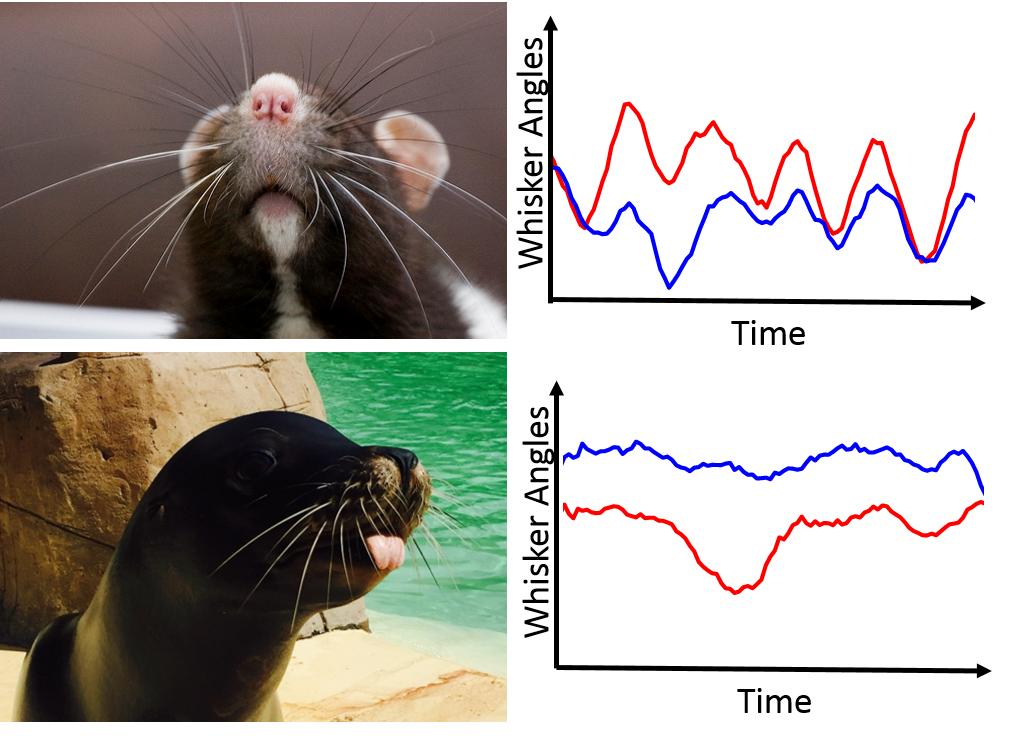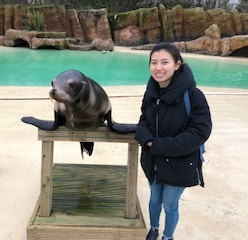Sea Lion Motion
RNCM Composer Jingyu Chen and Dr Robyn Grant are collaborating on a piece called Sea Lion Motion, for Oboe, Violin and Percussion, influenced by how animals interact with their environments
Scientist: Dr Robyn Grant
Senior Lecturer in Comparative Physiology & Behaviour

I try to understand how animals are adapted to their current, and changing, environments.
Specifically, I measure how animals use their facial touch sensors, or whiskers. Animal whiskers act much like our own finger-tips, and are moved precisely, with high-dexterity, over surfaces in order to identify object textures, shapes and positions.
They can scan their whiskers, with a precise cyclic rhythm, called whisking, which is amongst the fastest movements that animals can make! Indeed, many animals, such as rats, mice and seals, use their sense of touch as their primary sense to explore and find food in their dark environments.

Composer: Jingyu Chen
 I am a fourth-year undergraduate composition student at the RNCM, studying with Adam Gorb and Gary Carpenter. Through this collaboration, I’ve been very excited to discover that my compositions can be helpful to scientific research.
I am a fourth-year undergraduate composition student at the RNCM, studying with Adam Gorb and Gary Carpenter. Through this collaboration, I’ve been very excited to discover that my compositions can be helpful to scientific research.
I am interested in collaborating across different disciplines, especially in science. In this project, I propose to find out a link between Robyn Grant’s research and my music, and through this collaboration we discovered that California Sea Lions can have their behavioural response aroused through rhythmic auditory stimuli. We are currently in the process of collaborating with Blackpool Zoo, to observe how the California Sea Lions move rhythmically (bob their head) in response to composition of mine with different tempos.
To test this, I first worked on the rhythmic elements in my piece, creating three different speeds so that we could see if the sea lion would bob her head in different ways. The final composition ‘Sea Lion Motion’ for oboe, violin and percussion, is an artistically free response to the three rhythmically different areas in the sea lion study.
During my conversations with Robyn, I found out that sea lions might behave differently in response to different kinds of music – they may even dance!
My interests in composition were ignited during high school, where I explored different and unusual sounds, and where breaking traditional structure always attracted my attention. Two of my main pieces to date are: in 2015, the chorus piece ‘Love’s Philosophy’ performed by BBC Singers in a workshop at Maida Vale studios in London; and in 2016 my first orchestra piece – “Garden Mist” which was performed in the RNCM Brand New Day concert.

